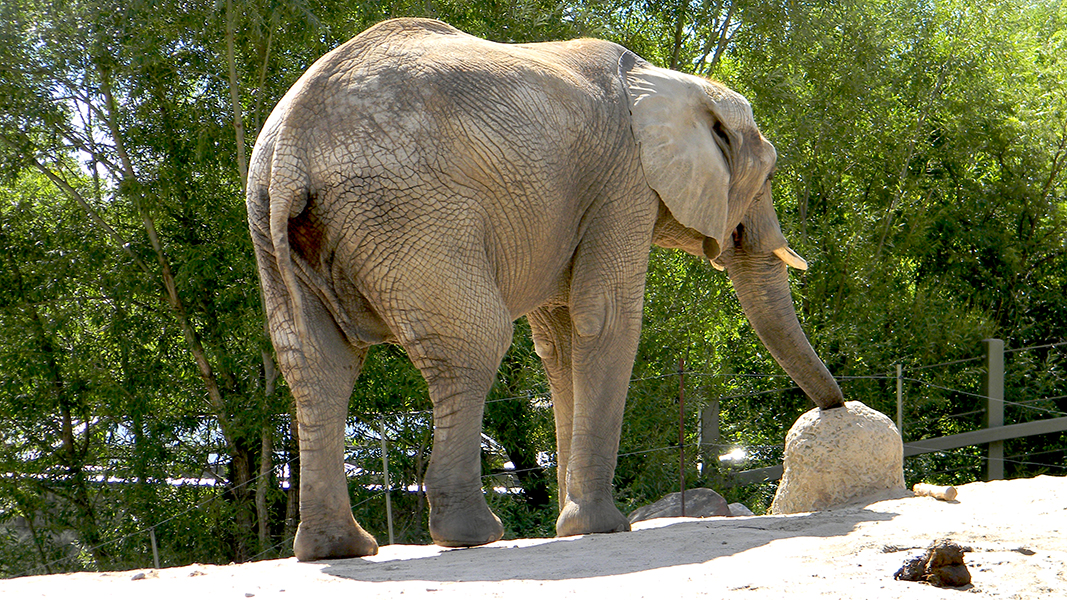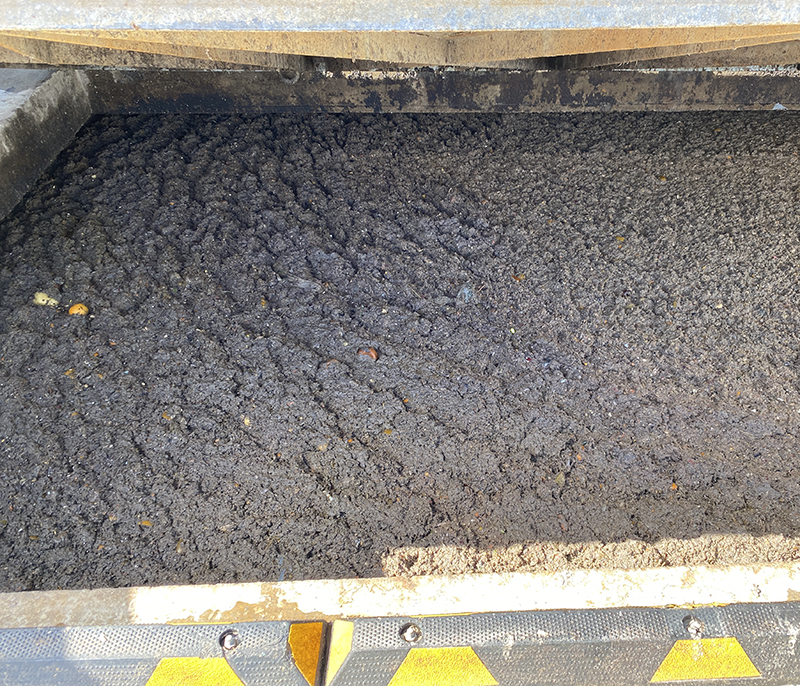Top: Elephant at Toronto Zoo. Laslovarga, CC BY-SA 3.0, via Wikimedia Commons
Lilian Schaer
A unique project in Toronto’s Rouge National Urban Park is recycling manure and inedible food waste into renewable clean energy and fertilizer. Welcome to ZooShare, Canada’s first zoo-biogas plant that generates power from zoo manure, preprocessed green bin waste, produce from grocery stores, and grease trap waste from local restaurants, institutions, and food processing facilities.
The plant began generating power on April 1, 2021, and produces enough electricity for 250 homes while reducing greenhouse gas emissions by approximately 10,000 tons of carbon dioxide (CO2e) annually. It all started with a goal of managing manure from the Toronto Zoo in a way that would be both environmentally responsible and yield revenue for the organization. An early opportunity to participate in the Ontario government’s Feed-In Tariff (FIT) program for renewable energy a decade ago didn’t come to fruition, but the project gained new life when Daniel Bida put forward a vision of a community-owned biogas project.
The Toronto Zoo became a key partner in what is now the ZooShare Biogas Limited Partnership, along with about 700 Ontarians who joined as co-op members and invested by buying community bonds. Bullfrog Power also came on board as an investor and sponsor of in-school workshops around renewable energy.
“The Zoo has been making and managing the same amount of manure for decades and windrow composting it at our site, and the vision was to take the zoo manure and complement it with food waste to generate sufficient biogas to make the project feasible,” says Bida, founder and a director of ZooShare. He adds that manure on its own doesn’t provide enough kilowatts for an economically viable digestion project.
The final push to make the biodigester a reality came in 2019 when Oshawa PUC Energy Services, a municipally-owned sustainable energy corporation, became an equity partner and purchased a 49% stake in the project. “From a feedstock perspective, we are permitted to take organic waste from commercial companies that comes either directly from businesses or homeowners via municipalities that collect green bin waste and preprocess it,” explains Bida. “We cannot receive organics directly from the curb, but if it is preprocessed to remove the contaminants, we can take it. And given the increasing volume of preprocessing capacity in the Toronto region, the available supply will continue rising as smaller municipalities implement collection programs.”
Self-Cleaning Digester
The anaerobic digester (AD) can take 17,000 metric tons (18,740 tons) of source material annually — 2,000 metric tons (2,200 tons) of zoo manure and 15,000 metric tons (16,500 tons) of food waste from various locations in the Greater Toronto Area (GTA). It can produce 500 kilowatts of energy, of which 100% goes back to the provincial power grid. ZooShare generates additional revenues in the form of tipping fees paid by the companies that deliver organics to the digester.
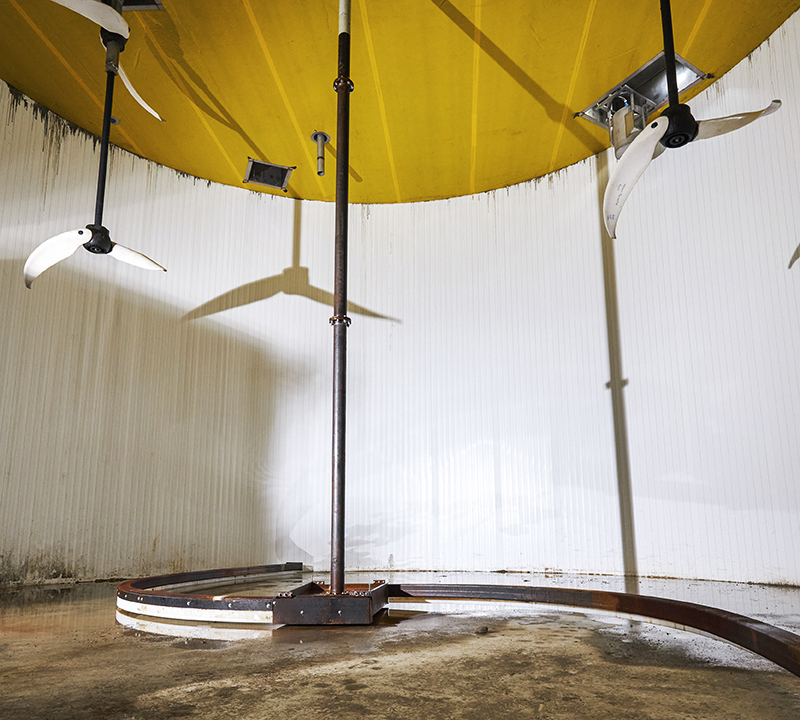
ZooShare installed a Fitec anaerobic digester equipped with a self-cleaning system that removes contaminants that sink to the floor of the tank. Photos by Adjacent Possibilities / Arash Moallemi
An essential part of making it all happen is the AD technology itself. The project uses the Fitec Self-Cleaning digester system, which removes contaminants from the waste being treated so leftover digestate can be sustainably upcycled into fertilizer. “In the early days of biogas, it was generally believed that there was no need for contaminant removal in the actual digester tanks because all organic waste is clean,” notes Tom Ferencevic, environmental scientist and CEO of Fitec Environmental Technologies Inc. “But even pretreated food waste contains residual contaminants like pieces of film and hard plastics, glass, metal, shells, stones and bones, which means the digestate left over at the end of the digestion process couldn’t be recycled back onto the land or into higher value-added products.”
In 2007, Ferencevic began working with Finsterwalder Umwelttechnik, a German engineering company with a long history in the biogas field, to deploy their advanced systems that solve the contamination issue in digesters and digestate quality problems while allowing almost any organic waste to be transformed into biogas. It uses a two-stage cleaning process of a primary, coarse separation followed by a secondary, fine cleaning step which permits the recovery of more than 96% of energy in contaminated food waste and produces clean digestate that meets rigid global quality standards.
The ZooShare project is Fitec’s fifth self-cleaning digester system installed in Canada. A key feature of the design is that it harnesses the biological system’s own natural organic waste cleaning effect. Following pretreatment, any contaminants in the biopulp entering the digester are released as digestible solids are broken down and converted into biogas by bacteria, explains Ferencevic. The heavy particles that sink to the digester floor and the lighter ones that float to the surface of the digester are both continuously removed by the in-tank floor sweeper and the plastics skimming systems.
“We feed our food waste plants with a biopulp that can range in total solids from 15% to 28%, but the total solids in the operating digester are around 4% to 5%,” he says. “The loss is what is converted to biogas, which is how the total solids level is reduced and the digestate becomes watery. This effect speeds up the separation of sinking and floating particles. The bacteria work 24/7, and so do our digester cleaning systems, taking away small amounts every hour and avoiding accumulation.” Without the help of the anaerobic bacteria during these fine cleaning steps, the entire process would require a lot more process water and energy consumption, and cost more in digestate management fees, he adds.
Rocket Fuel For AD
Walker Industries is one of the companies that supply grocery store and restaurant waste to the digester. The company collects fats, oils and grease from restaurants, institutions, and food processing plants with customized vacuum trucks. They’ve also installed grinders in the stores of large grocery retail clients that liquefy waste produce to create a slurry that is also collected by their trucks. Once at Walker’s Woodbridge facility, water is extracted, treated, and disposed of in municipal sewers, and after contaminant removal, the leftover material is delivered to the ZooShare digester.
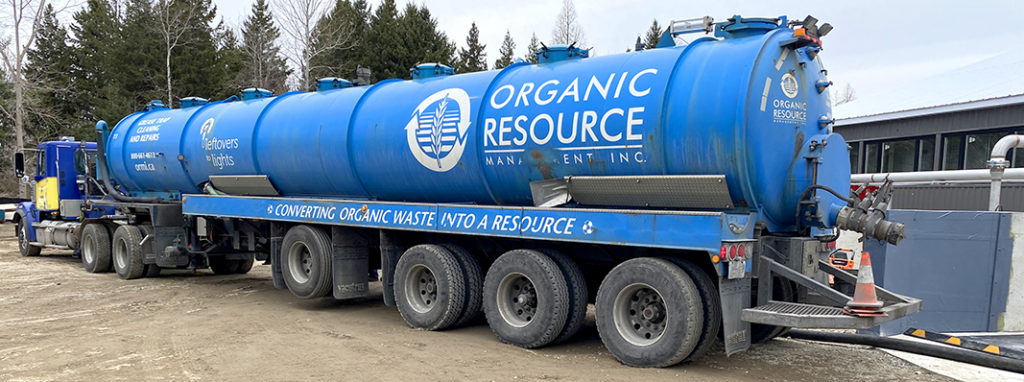
Walker Industries collects food waste and other high strength residuals from restaurants and grocery stores, which it preprocesses at a centralized facility before delivering the slurry to the ZooShare digester.
“We are creating a rocket fuel for anaerobic digesters that is super high strength with large gas-generating potential,” explains Geoff Boyd, Vice President of Resource Recovery at Walker Industries. “Before ZooShare, this material was going to different digesters across the province; now we’re staying in the region, which reduces freight costs and greenhouse gas emissions from trucking, and we’re able to create energy and help make the Zoo more sustainable. It’s a great circular economy success story.”
Once the waste arrives at ZooShare, it is pasteurized by the fully automated Fitec pasteurizing system, which is integrated into the digester’s heating system — a fact that significantly reduces operating costs, according to Ferencevic. The system utilizes a Jenbacher combined heat and power (CHP) system with engine and exhaust heat recovered and used to heat the pasteurizer and the digester. The biopulp is heated to a minimum of 70°C (158°F) and held for an hour before entering the digester to ferment and produce biogas. From there, clean digestate is decanted back into the digester and the grit drops off into a waste bin. All liquid digestate following digestion is pumped and filtered through a 0.5 or 1 mm screen before being spread on nearby farm fields as fertilizer.
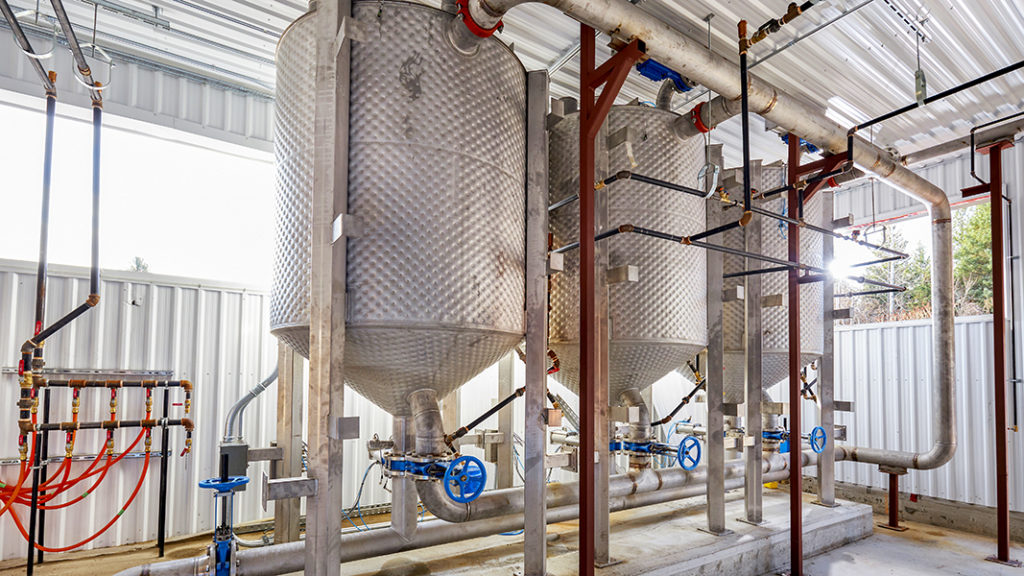
Prior to AD, food waste tipped at the digester must be pasteurized at 70°C for one hour. Heat recovered from the engine and exhaust keeps the Fitec pasteurization tanks above 70°C.
According to Bida, now that the project has come through its start-up phase, ZooShare Biogas LP is looking for ways it can optimize the system to make it run more efficiently and profitably. That includes searching for more effective solutions for handling digestate, which is currently stored in a holding tank and emptied twice a year. “Handling the digestate is an expensive proposition because it has a lot of water in it,” explains Bida. “There are a lot of macro and micronutrients together with organic matter, which is great for soil, but the amount of water makes it a costly proposition as soon as you are loading, driving, and spreading it on farm fields.”
ZooShare is considering adding equipment to its site that would separate the water from the nutrients and treat it for disposal into municipal sewer systems, so transportation is limited to only the value-adding nutrients. “This would increase the overall profitability, and that’s really important for these kinds of projects,” he says, adding ZooShare has already reached month-to-month operating profitability but will require some time until the initial investments are repaid. Future growth would include expansion of digestion capacity, notes Bida.
Lilian Schaer is an agricultural writer, editor and communications specialist at Agri-Food Project Services Ltd. in Guelph, Ontario, Canada.


